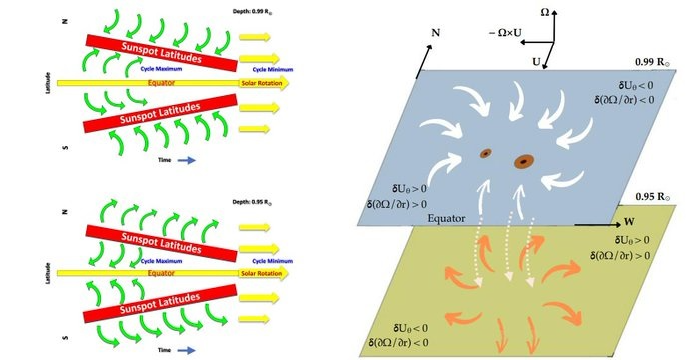New Clues to Solar Weather from Beneath the Sun’s Surface
A team led by researchers from the Indian Institute of Astrophysics (IIA), an autonomous institute under the Department of Science and Technology, has mapped dynamic plasma flows in the Sun’s near-surface shear layer (NSSL)—a critical zone extending up to 35,000 km below the solar surface. Their study, recently published in The Astrophysical Journal Letters, reveals how these subsurface currents evolve with the Sun’s 11-year activity cycle.

Using over a decade of helioseismic data from NASA’s Solar Dynamics Observatory and the NSO’s GONG network, the team discovered that plasma inflows toward sunspot latitudes reverse direction at mid-depth, forming large-scale circulation patterns influenced by the Sun’s rotation and Coriolis force. The findings offer fresh insight into how solar magnetic activity is shaped from below the surface, with implications for improving space weather prediction.
Interestingly, while these local plasma flows reshape rotational patterns near the surface, they are not the source of the Sun’s deeper, large-scale torsional oscillations—pointing to even more mysterious processes at work in the Sun’s interior. The study provides crucial clues for solar dynamo theories and helps unravel the complex interplay between the Sun’s inner and outer layers.
Source: https://iopscience.iop.org/article/10.3847/2041-8213/adc919